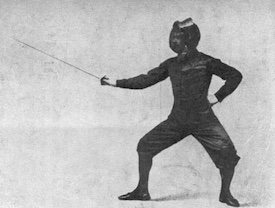What do we make of this. I'm watching it before bed, so I'll think it over tomorrow. But from my extremely layman's POV, I'm thinking... what is he getting at? Is this a very roundabout way of pooh-poohing measurements... objectivity? And the bit about cables... I still don't really feel like I perceive microseconds. But then what about the 'Perceiving Timbre' section. About different musical instruments being indistinguishable if you trim the first few microseconds from their recorded sound.
Wait... wouldn't that mean that if I was listening with a cheap cable, or audio gear, I wouldn't know what I was listening to? I've never had that experience either.
So, what he's doing in the first half is rather simple. Take all you can learn on a subject, remove anything conditional when it strictly is, remove any "yes, but", and only keep bringing up the best case scenarios achieved once for each variable studied in ultra isolation under the most ideal conditions. Sometimes talk about hearing, sometimes talk about events in the ear and make it look like they're the same thing. Show how the entire brain is involved when listening to music, but don't explain why that it is(influence from non audio senses, and memories, emotions, focus, expectations helping identify some things and altering others, you know, precision...). Instead, insist on the complexity to say that we're amazeballz.
This gentleman is marketing hearing in the first half of the video, not teaching you about it! It's an ad for ears. And if it went on TV, at the end, a lot of little warnings would come by very fast not so you can get them but so he wouldn't get sued.
We have incredible sensitivity in the ear, yes. Because all you need for the lowest intensity stimulus to be created at the ear, is to trigger 1 neuron in that ear(not one in the brain, one near the air cells), but it's a noisy system in itself(we generate our own vibrations and noises), and of course there is always slightly more than one atom worth of noise in a room. And the likelihood for 1 neuron at the ear to trigger other neurons that will trigger others etc. and give a sound impression, well, good luck with that. Imagine if it really was like he explains, non-stop experience of all the smallest noises internal and external, all the sounds, all the reverb in the room, ... I bet you couldn't even think straight. Focus alone rejects most of what is argued in the video. Focus can let you improve perception of one instrument in a band, at the cost of not getting as much of the rest. Focus can just as well take your attention and brain resources away from sound, to the point where you won't even be able to tell what song was just playing. Anyway, I could spend the entire day on this, delusional and fake is what his model of hearing really shows.
The cited paper from that guy who's been... it's Xmas time, so I'll just say... controversial. He takes all the paper at face value and more for his ear marketing effort. It's not serious. He talks about the impact of transients while discussing the experiment taking a single note from an instrument and removing part of the start, and part of the end until it's hard to identify the instrument. The purpose is to show that we care about more than the general spectrum, and that's correct. The envelope seems to be a bigger deal subjectively. But does that experiment tell us to make stuff up about transients? No, it was not the point of it.
Localization is incredibly complicated(a lot more than people usually know), relies on different "tools" at different frequencies, different signal information(binaural or not, timing, FR...) and ultimately, we're still not very good at it. Limited angular precision that gets worse to the sides. We overestimate small distances up to about 1meter, then underestimate them beyond that distance while being highly inaccurate. We simply won't locate certain frequencies at all. Just because we get a feeling of a given and precise position from sound, does not mean it's accurate(it's not). Just another case of mistaking an impression with reality.
The first half was advertising of the ear and brain, exaggerating, fantasizing, and ignoring things, the marketing way. The second part of the video is pure propaganda and the BS output has turned to 11. There are very few things that are true, but they're buried in so many false statements and empty conjectures presented as facts, that the right thing to do is to burn that second half of the video and quarantine the area.























 I do believe measurements are valuable for comparison but certainly not the whole story of how the object will sound for an individual.
I do believe measurements are valuable for comparison but certainly not the whole story of how the object will sound for an individual.